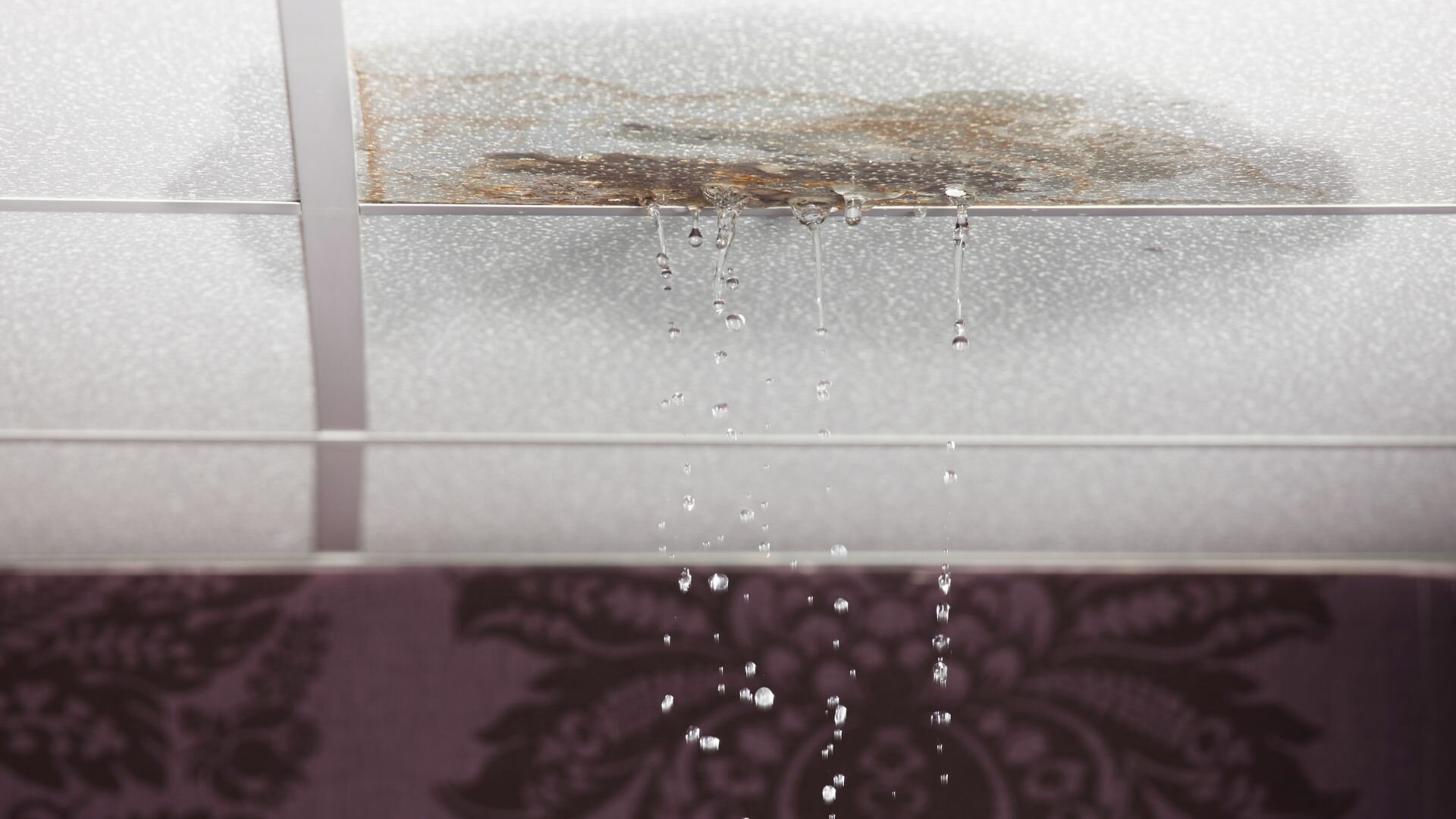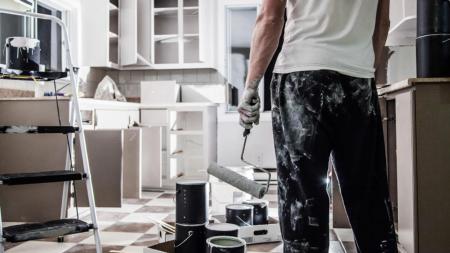![2024 02 Leaking Roof Stain Leaking Roof Stain]()
Homeowners often ignore or overlook a leaking roof as a minor issue that can be easily patched up. However, if neglected, unattended roof leaks can lead to substantial damage over time.
Water seeping through the roof can spread extensively, infiltrating walls, ceilings, insulation, etc. This consistent moisture enables the growth of toxic mould and mildew, which brings serious health hazards. Prolonged leakage also rots wooden frames, destabilises structures, and risks electrical short circuits and fires. Ignoring a leaking roof threatens your home, health, and safety.
Acting quickly to identify and repair roof leaks is crucial to avoid extensive repairs. This article will examine the overlooked dangers of leaving roof leaks unattended, the spreading damage it causes, and when to call qualified roofing professionals to prevent catastrophe. By understanding these threats, homeowners can act promptly when leaks appear and avoid preventable destruction.
Identifying the Source of Roof Leaks
Pinpointing the exact location of a roof leak is crucial for proper repairs. However, roof leaks can be tricky to diagnose. Here are some methods to help track down the source:
- Examine the interior ceilings for water stains. Stains indicate leakage areas, but the source may be further upstream—trace stains to potential entry points.
- Feel for moisture on roof decking during rainfall using a moisture meter. Tested around suspected areas like skylights, vents, and seams. Detected moisture indicates the leak site.
![2024 02 Leaking Skylight Stain Leaking Skylight Stain]()
- Perform a water test. Using a garden hose, have someone spray areas while you check inside for water intrusion. Isolate the leakage spot.
- Look for daylight shining through. Go in the attic on a sunny day and scan for sunlight penetrating the roof—Mark visible holes or cracks.
- Inspect roof flashings, valleys, joints, and protrusions. Cracked caulking around vents or skylights often causes leaks.
- Check for issues with roof penetrations, like around chimneys, satellite dishes, and plumbing vents. Flashing defects allow water in.
- Scan the roof interior and exterior for missing, cracked, or curling shingles or tiles. Storm damage often rips shingles.
- Ensure rain gutters are clear. Clogged gutters overflow and pour water down exterior walls, mimicking a roof leak.
Careful sleuthing using these tips will help uncover the true source of the leak so roofers know the exact repair location. Don’t rely on interior water stains - trace back to the external root cause. Targeting repairs correctly avoids repeat leakage.
Water Infiltration Leads to Extensive Damage
When water seeps through the roof, it can spread extensively and cause deterioration in many areas. Leaks often begin slowly with minor dripping, so homeowners dismiss it as a small issue.
However, persistent moisture saturates materials over time, enabling rot, mould growth, and structural instability. As water infiltrates, it soaks into ceiling drywall, insulation, and wooden framing. Plywood, rafters, and sheathing becomes saturated.
This moisture causes drywall to swell and crumble, insulation to waterlog, and wood to rot. Trapped moisture spreads laterally, infiltrating walls and ceilings beyond the original leak site. Ignoring a minor roof leak leads to an exponential spread of water damage over months or years.
Toxic Mould Endangers Health
The consistent moisture from a leaking roof enables toxic mould growth that can endanger health. Mould spores thrive in damp environments and spread rapidly across wet surfaces. Mould exposure can cause respiratory issues, including wheezing, asthma attacks, and persistent coughing. Mould releases mycotoxins, poisonous substances linked to neurological and immune problems.
![2024 02 Mould On Ceiling Mould Ceiling]()
Prolonged exposure is particularly hazardous for children, seniors, and those with compromised immune systems. Black mould is especially dangerous, linked to memory loss, chronic fatigue, nausea, and brain damage. Leaking roofs often lead to toxic black mould infestations in walls, HVAC systems, and ceilings. As mould spreads, it releases spores into living areas, leading to respiratory illness, allergic reactions, and toxicity. Ignoring a minor roof leak can create an invisible mould problem with significant health repercussions.
Destabilised Structures and Faulty Electrics
Persistent moisture from a leaking roof can also compromise the home’s structural integrity and create electrical hazards. As water seeps into walls and ceilings, it causes wooden studs, joists, and trusses to rot and weaken over time.
Deteriorated framing cannot correctly support the home’s weight, leading to cracks, sagging, and possible collapse. Damp conditions also damage electrical wiring’s protective sheathing, enabling short circuits and electrocution risks. NSW Fire & Rescue warns that faulty electrical systems lead to 40% of residential fires annually across the country.
Leaking roofs can be a cause of electrical fires in Australian homes. Neglected roof leaks can bring down the roof and electrify your home in the worst way. Acting quickly on leaks protects your structural stability and avoids preventable electrical fires.
![2024 02 Electrical Fire Wall Electrical Fire Wall]()
Preventing Roof Leaks
Taking proactive measures to maintain your roof is key to preventing leaks and associated damage. Here are some tips for keeping your roof in peak condition:
- Conduct regular roof inspections, at least annually. Look for cracked, missing or damaged shingles, rust spots, and deterioration.
- Have a professional roof inspection every 3-5 years. Licensed roofers can spot underlying issues.
- Clear debris like leaves and branches regularly. Built-up debris holds moisture against the roof.
- Clean gutters and downspouts twice per year. Clogged gutters can lead to water intrusion.
- Re-seal any flashing, vents, skylights, etc., every 3-5 years as caulking deteriorates.
- Prune overhanging tree branches. This prevents abrasion damage from wind sway.
- Replace aging or damaged shingles, tiles, and sheeting before leaks occur. Use quality materials.
- Install protective underlayment beneath shingles and around vulnerable areas.
- Consider gutter guards to prevent clogs from leaves and debris.
- Improve attic ventilation to reduce heat and moisture buildup.
- Hire only properly certified roofers for any roof repairs or replacements.
Investing a little time and money into routine roof care and maintenance helps avoid major headaches down the road. An ounce of prevention is worth a pound of cure for roof leaks!
Trust Qualified Roofers for Urgent Repairs
Trust qualified Sydney roofing contractors for prompt repairs when a roof leak is detected. Attempting DIY patches is a temporary fix and allows moisture damage to worsen. Licensed tradesmen have the expertise to identify leak causes, repair or replace damaged roof materials, and prevent recurrence.
Incorrectly installed or patched roofs can result in leaks. Qualified roofers follow best practices for long-term solutions. They use quality materials and advanced sealing methods to provide durable waterproofing.
For Sydney homeowners, time is of the essence for roof leak repairs to avoid mould contamination and structural issues. Reputable local companies like Final Touch Carpentry & Construction offer rapid response to inspect and quote repairs.
Don’t wait on a leaking roof - consult trades professionals immediately to restore your roof’s integrity. Protect your home and health by acting quickly and choosing quality workmanship.






